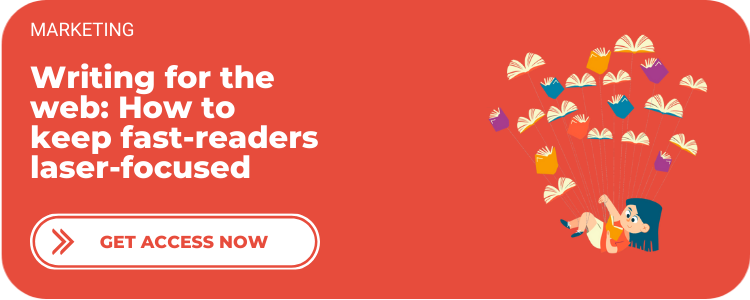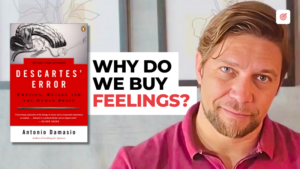The first piece of information people want when visiting a website is a solution.
The second one is to understand who’s behind the solution.
That makes the About Page the second most important piece of information of any online brand.
Why? Because that page is all about trust-building.
People need to see:
- If they like you.
- If they connect with you.
- If they believe you.
Today, we’re going to learn 4 Copywriting Techniques to craft About Pages that turn website visitors into loyal customers.
But before we get into it…
Let’s dive in.
Copywriting Example 10 – Ann Handley: WSJ Best-Selling Author & Tiny-House Owner
What can we learn from this copywriting example?
Copywriting Technique #21: Topical Authority
There's plenty of copywriting books out there, but Ann Handley is a “WSJ best-selling author.”
Do you see the difference?
What can you tell your audience about yourself that can back you up as an authority in your niche?
You can communicate that with:
- Results.
- Social proof.
- Public Achievements.
To don’t sound as you are bragging about your own accomplishments, you can combine this technique with the “Third Person”, and let others speak about you.
Ann Handley is a WSJ Best-Selling Author. That’s a recognition made by a third party. It sounds authentic without sounding cocky.
If your business has a PR department, it’s their job to seek press hits, prize compliances, and public recognitions to clip them to be used on your About Page among other places.
If you don’t have a PR department, make sure you clip and document every word said by any third party or clients about you.
Copywriting Technique #22: Personality
Ann Handley is a best-selling author. Her book Everybody Writes is a must-read among copywriters.
What most people don't know is that she's a “tiny-house owner”. That personal information resonates with her audience and shows the human behind the myth.
What can we learn from that?
That you are the one thing that makes your business unique. Use that to craft compelling About Pages copy.
In a competitive scenario with players offering similar solutions, personality is the one thing that can make audiences align with one brand over the others.
Don’t believe me?
Then tell me. What brands come to your mind when I mention these people?
- Elon Musk.
- Richard Branson.
- Jeff Bezos.
Personal Brands are a trend that will continue to grow and change the way we do business.
Here are 3 things to add to tell your audience about yourself on your About Page:
- Your starting point. This will help your audience relate with you by knowing that back then you were like they are now.
- Your transformation. This will lead your audience, that already feels connected with your past, to feel inspired by your courage to change what is their current status.
- Your current state. That will provide authority based on the fact that you are now what you desire to be, and authenticity based on the fact that you passed through all the necessary steps to get there.
Authority and authenticity are a natural conclusion of that story.
That makes you the first success case of the solutions you want to sell.
Copywriting Example 11 – Stu McLaren: Fun Facts
What can we learn from this copywriting example?
Copywriting Technique #23: Comedy
Comedy reduces decision-making tension, provide personality, and break objections.
Check these statements from Stu’s About Page:
- “I’ve got a university education (Honors Business) but maybe use 1% of what I’ve learned.”
- “I’ve jumped out of planes, off bridges, and out of very tall buildings.”
- “I’ve swam with sharks, sting rays, and other underwater creatures.”
Stu is not throwing words away. He's showing a lifestyle that he can only have because of the freedom his product promises.
That’s foundational, here. That comedy or that tense breaker needs to help build the culture that serves to future sales.
Copywriting Example 12 – Unmarketing: Oh, And They Met on Twitter. How’s That For ROI?
What can we learn from this copywriting example?
Copywriting Technique #24: Fresh Perspective
Copywriting is telling stories in creative ways.
If you run a business that teaches companies how to better perform, how that punch line How’s that for ROI? would sound to you?
Funny, fresh, and engaging?
This technique relies on:
- Making unexpected comparisons.
- Adding unexpected parameters.
- Showing unexpected results.
To a knowledgeable audience, this is the one piece of copy that can triple sales.
Surprise your audience with a fresh perspective and they won’t forget you.




